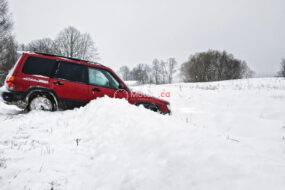Teenage Drivers Tips for Teaching Safe and Responsible Driving is a significant milestone, both for them and for the nervous parents in the passenger seat. It’s a time of mixed emotions, where the excitement of newfound freedom mingles with the anxiety of ensuring their safety on the road. As a parent or a driving instructor, imparting not just the technical skills but also instilling a sense of responsibility is crucial. Here are some tips to guide you through the process of teaching safe and responsible driving to Teenage Drivers.
Lead by Example
Teenage Drivers are keen observers, and they often mimic the behaviors they see. Ensure that you exhibit responsible driving habits. Follow traffic rules, avoid distractions, and practice patience. Your actions speak louder than words. Set clear expectations and rules for driving. Discuss the importance of wearing seatbelts, adhering to speed limits, and avoiding distractions like texting or talking on the phone. Establish consequences for breaking these rules to emphasize their significance.
Start with a Solid Foundation
Begin the learning process in a controlled environment, such as an empty parking lot. Teach them the basics of steering, braking, and accelerating before hitting the road. Familiarize them with the vehicle’s controls and ensure they are comfortable behind the wheel. Gradually introduce more complex driving scenarios as their skills develop. Provide guidance on merging onto highways and navigating different traffic situations.
Teach Defensive Driving
Teenage Drivers defensive driving techniques, such as maintaining a safe following distance, anticipating the actions of other drivers, and staying vigilant for potential hazards. Introduce driving in different conditions, including nighttime and adverse weather. Teach them how to adjust their driving to low visibility and slippery roads. Highlight the importance of using headlights, reducing speed, and being cautious during challenging conditions.
Emphasize the Dangers of Distractions
With the prevalence of smartphones, distractions are a major concern. Stress the dangers of texting while driving and other distractions. Encourage them to keep their phones out of reach or use hands-free options if necessary. Teach teenagers to make responsible decisions while driving. This includes knowing when it’s safe to overtake, understanding the risks of driving under the influence, and the importance of staying focused on the road.
Regularly Check and Maintain the Vehicle
Instill the habit of regularly checking the vehicle’s condition. Teach them how to monitor tire pressure, fluid levels, and the overall health of the car. Stress the importance of scheduling regular maintenance to ensure the vehicle is safe and reliable. Regular vehicle check-ups are like health check-ups for your car. Just like we take care of ourselves by eating well and exercising, cars need their own version of TLC. Monitoring tire pressure is like checking your blood pressure—too high or too low, and it can lead to trouble.
Provide Positive Reinforcement
Acknowledge and reward responsible driving behavior. Whether it’s a simple praise or allowing additional driving privileges, positive feedback reinforces good habits. Positive reinforcement goes a long way in shaping behavior. Imagine it like a gold star on a chart but for driving. When someone practices responsible driving, it’s like acing a test, and a little acknowledgment can make them feel on top of the world.
Encourage Open Communication
Keep communication channels open. Encourage them to share their experiences, ask questions, and express any concerns they may have. A supportive and open environment fosters trust and allows for a smoother learning process. it’s about creating an atmosphere where everyone feels valued and heard. And you know what they say, a smooth learning process is like a well-choreographed dance—every step is important, and communication is the music that keeps it flowing seamlessly
Driver’s Education Programs
Consider enrolling your teenager in a formal driver’s education program. These programs often provide comprehensive training, including classroom instruction and behind-the-wheel practice with certified instructors.The hands-on experience with certified instructors is like having a seasoned guide in the passenger seat, providing real-time feedback and guidance. It’s not just about learning how to steer and brake; it’s about instilling a sense of responsibility, awareness, and decision-making.
Conclusion
In conclusion, teaching safe and responsible Teenage Drivers drivers requires a combination of patience, clear communication, and leading by example. By instilling good habits from the beginning and gradually exposing them to different driving scenarios, you can help shape responsible and confident drivers. Remember, the goal is not just to pass the driving test but to ensure a lifetime of safe and responsible driving habits.





